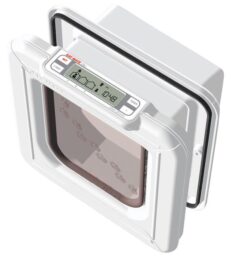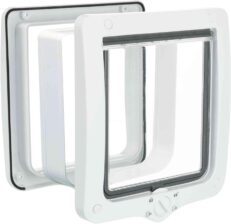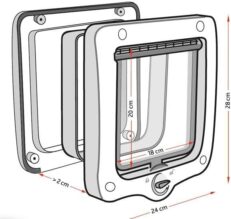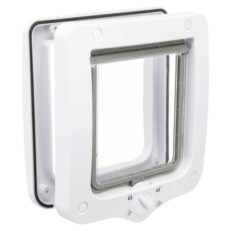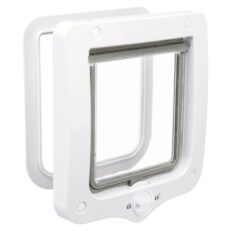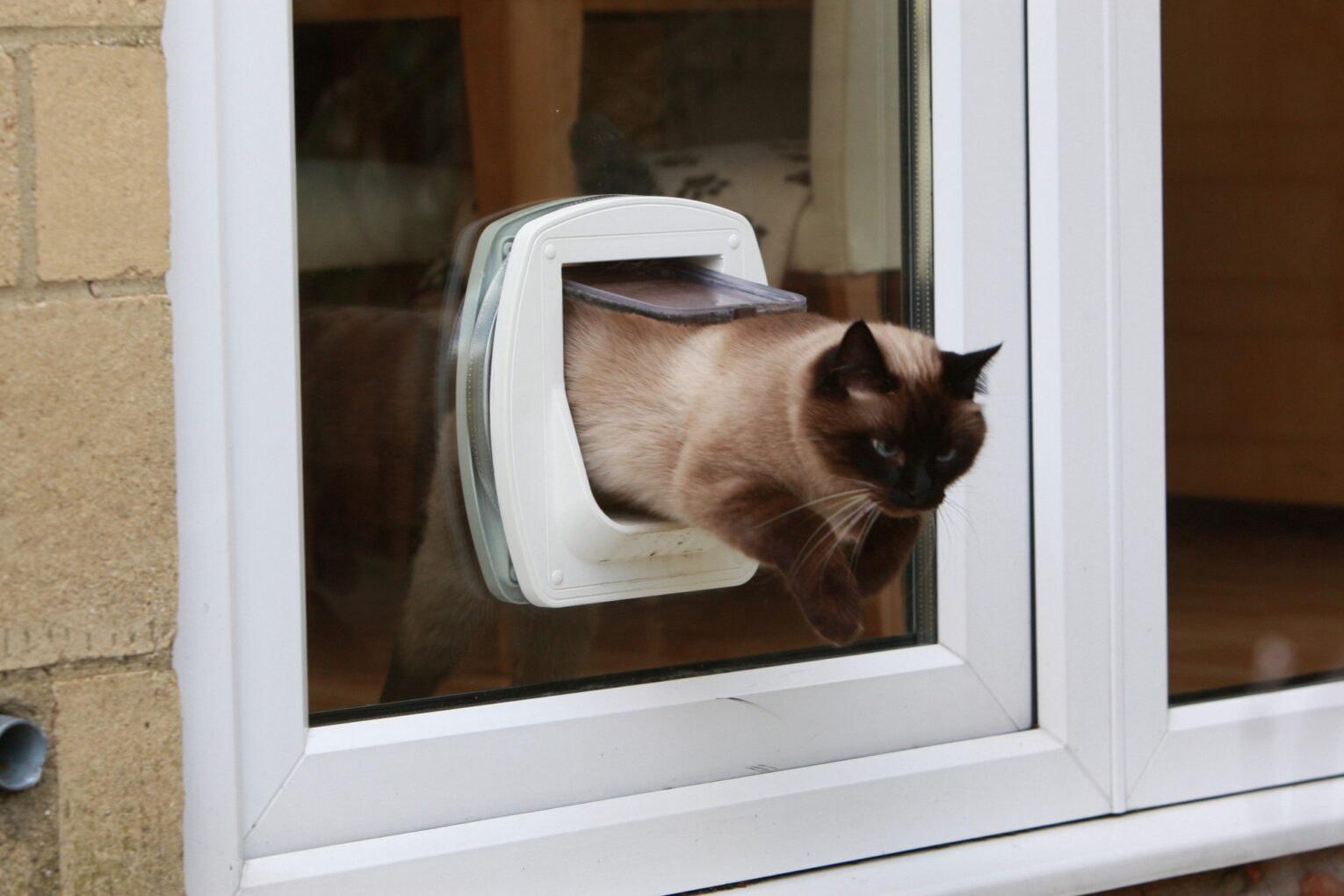
In this inaugural chapter, we delve into a common yet often overlooked issue in pet care: a cat’s fear of using a new cat flap. This seemingly minor problem can significantly impact both the cat’s and the owner’s quality of life. Let’s explore this situation, drawing from a personal experience that highlights the crux of the matter.
Many cat owners decide to install a cat flap to grant their furry companions the freedom to explore the outdoors and return home at their leisure. However, adapting to this new entryway can be a daunting challenge for some cats. A prime example is the reaction to the ‘click’ sound made by certain high-tech cat flaps, like the Pet Porte. My own cat, initially curious about this new addition to our home, became noticeably apprehensive when it first heard the clicking noise as the flap unlocked. This fear, seemingly trivial, can lead to a reluctance or outright refusal to use the cat flap, thereby negating its intended purpose.
The importance of cat flaps extends beyond the convenience they offer. They serve as a critical means for pets to exercise their natural instincts and explore their environment, contributing to their physical and mental well-being. Moreover, for pet owners, cat flaps represent a solution to the constant opening and closing of doors, ensuring peace and independence for both parties.
The goal of this blog is to address this specific challenge head-on. We aim to provide practical solutions, expert advice, and supportive insights to help pet owners assist their cats in overcoming their fear of cat flaps. Whether it’s acclimatizing them to the new device, troubleshooting specific issues like the intimidating click of a cat flap, or exploring alternative cat flap options, our objective is to ensure a harmonious coexistence where cats can freely and fearlessly use their cat flaps. Join us as we embark on this journey, transforming a source of feline anxiety into an opportunity for growth and comfort.
Understanding Cat Behavior and Fear
Basic Cat Psychology
Cats, often perceived as mysterious creatures, have a unique way of interacting with their environment. Unlike humans, cats rely heavily on their senses to navigate the world around them. Their vision, for instance, is exceptionally adept at detecting movement, making them excellent hunters. They are also highly sensitive to changes in their environment, whether it’s a new piece of furniture or a shift in the daily routine. This sensitivity is a survival mechanism, ingrained in their psychology. It’s essential to recognize that cats are creatures of habit and any disruption can lead to stress or discomfort. Understanding this aspect of cat psychology is crucial for pet owners, as it helps in creating a stable and comforting environment for their feline companions.
Fear and Anxiety in Cats
Fear and anxiety are common emotional responses in cats, often triggered by unfamiliar stimuli or changes in their environment. Sounds, in particular, play a significant role in inducing fear. The sudden noise of a vacuum cleaner, for instance, can be terrifying for a cat. Similarly, visual changes like moving to a new house or rearranging furniture can cause anxiety. It’s important to understand that cats, being territorial animals, find comfort in familiarity. Disruptions in their known territory, whether through new scents, sounds, or sights, can lead to heightened stress. Recognizing these triggers is the first step in managing a cat’s fear and anxiety, paving the way for a more harmonious living situation.
Impact of Fear on Cats
Fear can have a profound impact on a cat’s behavior and overall well-being. A scared cat may exhibit behaviors such as hiding, aggression, or even inappropriate elimination. These reactions are not acts of defiance but are instead rooted in a deep-seated sense of fear or discomfort. Chronic stress, resulting from prolonged fear, can lead to health issues such as a weakened immune system, making the cat more susceptible to illnesses. Furthermore, fear can disrupt the bond between a cat and its owner, as trust becomes compromised. It’s vital for cat owners to recognize the signs of fear and address them promptly. Creating a safe and predictable environment, coupled with patience and understanding, can significantly alleviate a cat’s fear, leading to a happier and healthier pet.
Training Your Cat to Use the Cat Flap
Training your cat to use a cat flap can be a challenging but ultimately rewarding process. It requires patience, understanding, and a step-by-step approach to help your feline friend overcome their initial hesitation or fear. Here’s a detailed guide to facilitate this transition.
Step-by-Step Training Guide:
- Familiarization: Start by introducing your cat to the cat flap when it’s in a fixed open position. Let them sniff and explore it at their own pace, without any pressure.
- Encouragement: Once they seem comfortable around it, encourage them to pass through the open flap. You can do this by placing their favorite toy or treats on the other side of the door.
- Manual Assistance: Gently guide them through the flap using your hands if they’re hesitant. It’s important to keep this experience positive and stress-free.
- Gradual Closure: Slowly begin to lower the flap over several sessions, allowing your cat to get used to the sensation of pushing it open.
- Complete Use: Once they’re comfortable with a partially closed flap, encourage them to use it fully closed. Stand on the opposite side to motivate them to come through.
Overcoming the Fear of Noise: For cats frightened by the ‘click’ sound of advanced cat flaps like the Pet Porte, desensitization is key.
- Gradual Exposure: Start by triggering the click noise while the cat is at a comfortable distance. Pair this with positive experiences like feeding or playtime.
- Decrease Distance: Gradually decrease the distance between your cat and the flap while making the clicking sound, always ensuring they remain relaxed.
- Associate with Positive Outcomes: Feed them near the flap or play with them, so they associate the noise with positive outcomes.
Positive Reinforcement Techniques:
- Treats: Each time your cat successfully uses the flap, reward them with a treat. This creates a positive association.
- Praise: Use a cheerful, encouraging voice to praise your cat. Cats respond well to positive vocal tones.
- Patience and Consistency: Consistently reward and encourage your cat, but never force them through the flap. Patience is essential in building their confidence.
Remember, each cat is unique and may require different lengths of time to adjust. The key is to maintain a calm and positive environment, allowing your cat to learn at their own pace. With these strategies, your cat will soon be using the cat flap with ease and confidence.
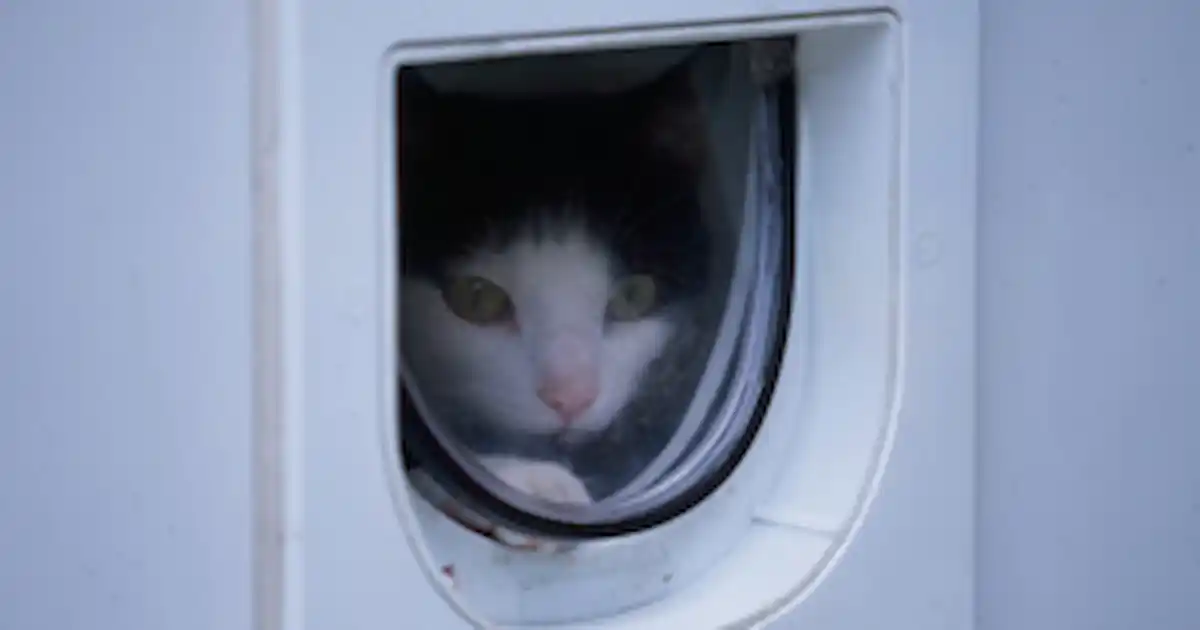
Alternative Solutions and Conclusion
Alternative Solutions
If a cat continues to exhibit signs of fear or anxiety despite efforts to create a stable environment, exploring alternative solutions can be beneficial. One such option is to consider different types of cat flaps that allow for more controlled access to the outside, providing a sense of security for both the cat and the owner. Another approach could be to introduce temporary measures like pheromone diffusers, which can help to soothe and calm a stressed cat. Sometimes, simply providing a safe and secluded space within the home where the cat can retreat when overwhelmed can make a significant difference. It’s about finding what works best for your specific cat, as each cat’s needs and responses are unique.
Consulting a Vet or Animal Behaviorist
If these measures don’t seem to alleviate the cat’s fear or if the behavior worsens, it might be time to consult a professional. A veterinarian can rule out any medical causes of the behavior, such as pain or illness, which could be contributing to the cat’s anxiety. If health issues are not the cause, a certified animal behaviorist can provide more targeted strategies. These professionals are trained to understand animal behavior deeply and can offer personalized plans that cater to the individual needs of your cat, ensuring a more effective and humane approach to managing fear and anxiety.
Summary and Final Thoughts
In summary, understanding and addressing cat behavior and fear requires patience, empathy, and sometimes, a bit of creativity. Recognizing the signs of fear and anxiety, understanding their triggers, and implementing effective strategies are essential steps in ensuring the well-being of our feline friends. Remember, each cat is unique, and what works for one may not work for another. The key is to observe, understand, and adapt to your cat’s specific needs. We encourage readers to share their experiences or success stories in dealing with cat fear and anxiety. Your insights could provide invaluable support to fellow cat owners navigating similar challenges. Ultimately, the goal is to foster a nurturing and understanding relationship between you and your cat, enhancing the bond you share.

